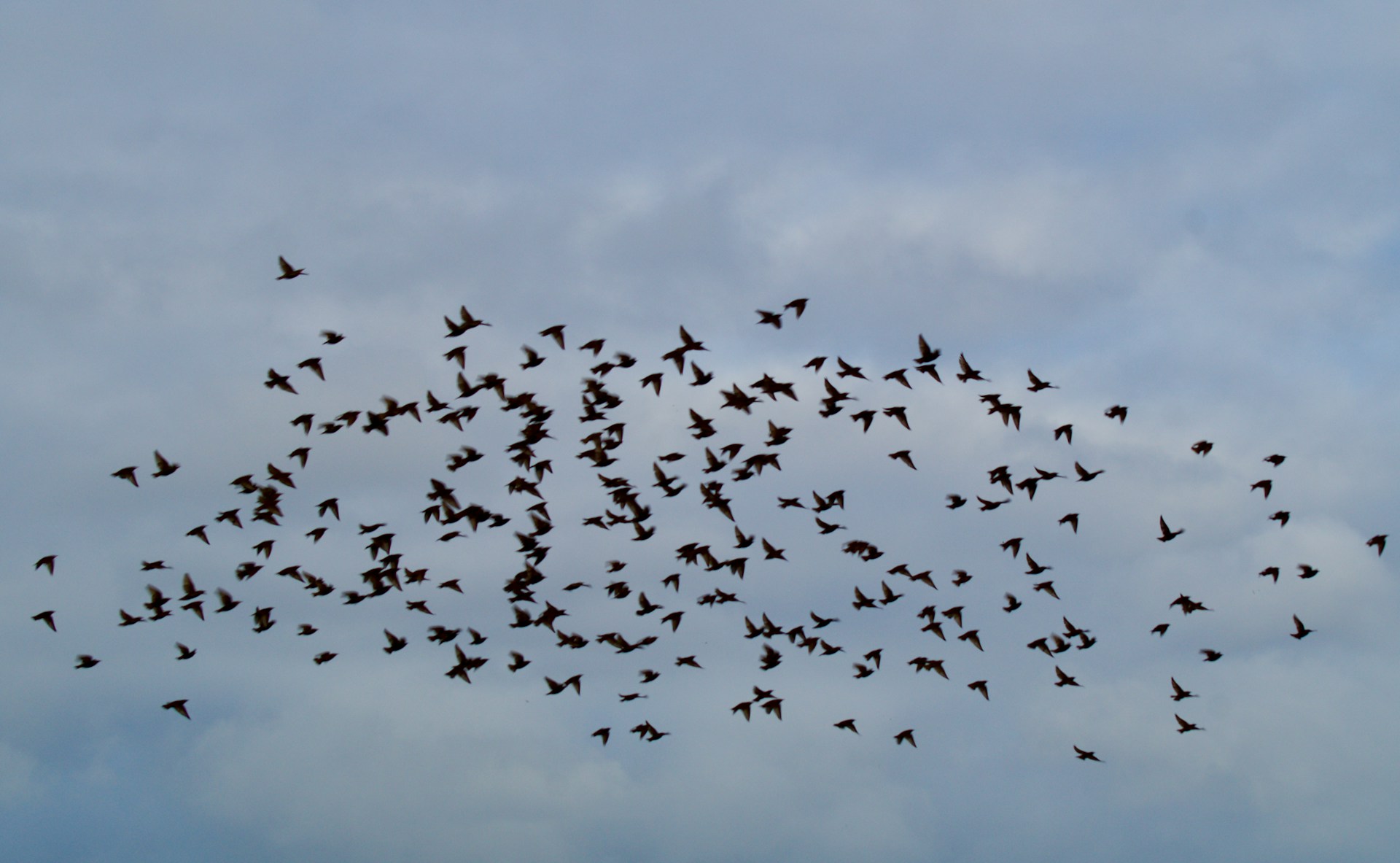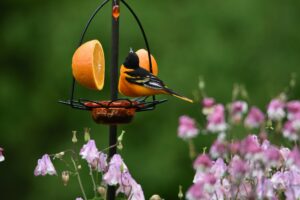
How Do Birds Navigate During Migration?
Bird Migration: An Incredible Phenomenon
Bird migration is a fascinating natural phenomenon that continues to astound scientists and bird enthusiasts alike. Each year, billions of birds embark on long and arduous journeys, often covering thousands of miles, in search of suitable breeding grounds, abundant food sources, and favorable climates. The intricacies and complexities of this instinctual behavior are truly remarkable.
One key aspect of bird migration is the ability of birds to navigate over vast distances. Without the aid of maps or GPS, birds rely on various cues and mechanisms to guide their way. Scientists have identified several methods that birds use for orientation during their migratory journeys, including the magnetic compass, celestial navigation, and the perception of environmental cues. These mechanisms work in harmony, allowing birds to navigate with impressive accuracy across unfamiliar territories, often returning year after year to the same breeding grounds. The ability of birds to navigate with such precision and reliability is a testament to the wonders of nature and the incredible adaptability of these feathered travelers.
The Magnetic Compass: A Tool for Orientation
Birds have long captivated scientists and researchers with their remarkable ability to navigate across vast distances during migration. One of the tools these feathered navigators utilize is the magnetic compass. This internal compass allows birds to sense and respond to the Earth’s magnetic field, enabling them to orient themselves in the direction they need to travel.
The magnetic compass works by detecting subtle changes in the Earth’s magnetic field. This ability is thought to be thanks to specialized receptor cells found in the birds’ eyes, specifically in the retina. These receptor cells contain a protein known as cryptochrome, which is sensitive to magnetic fields. When exposed to the Earth’s magnetic field, cryptochrome influences the bird’s perception of light, providing them with important information about their orientation. While the exact mechanisms of how birds perceive this magnetic field remain the subject of ongoing scientific research, it is clear that the magnetic compass plays a vital role in guiding birds on their migratory journeys.
Celestial Navigation: Guided by the Stars
Birds have long been known to navigate by using the stars as a guide. These winged creatures possess an innate ability to recognize and interpret the celestial bodies that adorn the night sky. By using the stars as points of reference, birds are able to maintain a consistent course when embarking on their migratory journeys.
Research shows that birds rely on various celestial cues to determine their direction and adjust their flight paths accordingly. For instance, they may use the North Star, also known as Polaris, as a fixed reference point in the northern hemisphere. By locating Polaris, birds can discern true north and orient themselves in the desired direction. Additionally, birds are believed to use the patterns and positions of other stars to map out their routes and keep a steady heading. This remarkable phenomenon of celestial navigation showcases the incredible adaptability and intelligence of these avian navigators as they effortlessly traverse vast distances.
Environmental Cues: Utilizing Landmarks and Geography
Birds have an extraordinary ability to utilize environmental cues, such as landmarks and geography, to navigate during their long migratory journeys. These cues enable them to establish and maintain their route, even across vast distances. One key environmental cue that birds use is topographic features. For example, they are known to follow coastlines or mountain ranges, using them as reference points to stay on track. Additionally, birds are proficient at recognizing and utilizing prominent landmarks along their journey, such as rivers, lakes, or distinct geographical formations. By relying on these recognizable features, birds are able to maintain a sense of direction and navigate with precision.
In addition to topographic features, birds also take advantage of geographic landmarks to aid in their navigation. For instance, they can rely on larger geographic structures, such as mountain ranges or large bodies of water, as constant references throughout their migration. By maintaining a relative position to these landmarks, birds can easily determine if they are on track or if they need to adjust their course. Moreover, birds also use smaller and more specific geographic features, such as islands or peninsulas, to guide their migration. These features act as reliable markers that help birds stay oriented and maintain their intended path.
The Internal Clock: Timekeeping for Long Journeys
Birds are incredible navigators, capable of undertaking long, arduous journeys across vast distances. One of the tools they rely on for successful navigation is their internal clock, which helps them keep track of time during these extended travels. This internal clock is a biological mechanism that allows birds to regulate their daily activities and make adjustments based on the changing seasons.
The internal clock is essential for birds during migration as it helps them time their movements and adapt to different environmental conditions. By keeping track of the passing hours, birds can synchronize their activities with the natural rhythms of the day, such as feeding, resting, and flying. This internal timekeeping enables them to make efficient use of their energy reserves and ensure they reach their destinations in a timely manner. As the days grow longer or shorter, birds are able to adjust their internal clocks accordingly, ensuring they are always in sync with the changing daylight hours.
Migratory Restlessness: The Instinct to Move
Birds are known for their restlessness, especially during the migration season. This instinctive need to move, known as migratory restlessness, drives them to embark on incredible journeys across vast distances. Scientists believe that this restlessness is triggered by a combination of internal factors and external signals.
One of the internal factors that contribute to migratory restlessness is hormonal changes. As the migration season approaches, birds experience an increase in certain hormones, such as testosterone, which leads to restlessness and the urge to move. This hormonal surge prepares them physically and mentally for the demanding journey ahead. In addition, birds possess an internal clock, known as circannual rhythm, that helps them sense the changing seasons and triggers their migratory restlessness. This internal clock is influenced by variations in daylight, temperature, and other environmental cues, helping birds accurately time their departure.
Sensory Perception: Navigating by Sight and Sound
Birds have an extraordinary ability to navigate their migration routes using their sensory perception of sight and sound. They rely on visual cues, such as landmarks and distinct geographical features, to guide them on their journey. Birds are highly skilled at identifying and remembering landmarks along their migratory path. Whether it be a mountain range, a river, or a distinctive tree, these visual markers help them maintain their course and ensure they stay on track.
In addition to using sight, birds also rely on sound to navigate during their migration. Many species are known for their distinct calls and songs, which they use not only for communication but also for orientation. By listening to the sound of flowing water, the rustling of leaves, or the calls of other birds, they can navigate and detect changes in their environment. This auditory information serves as a critical tool to help birds stay on course and successfully reach their destination.
Inherited Knowledge: Learning from Previous Generations
Bird migration is a fascinating behavior that continues to intrigue scientists. One intriguing aspect is the idea of inherited knowledge – the ability of birds to learn navigational routes from previous generations. It is believed that young birds acquire information about migration routes and stopover sites from their experienced parents or other experienced individuals within their population.
Through observation and experimentation, researchers have found evidence of this inherited knowledge in various bird species. For example, young songbirds, such as the Northern wheatear, are able to navigate accurately during their first migration without any prior experience. This suggests that they possess an innate ability to follow established routes, which they have inherited from their parents. These findings highlight the importance of learning from previous generations in ensuring successful migration and the survival of bird populations.
Adapting to Changing Conditions: Flexibility in Navigation
Birds are remarkable navigators, capable of adapting to changing conditions with remarkable flexibility. One way they demonstrate this is through their ability to adjust their migratory routes based on environmental cues. For example, if a favored food source becomes scarce along their usual route, birds may alter their path to find alternative feeding grounds. This flexibility allows them to increase their chances of survival by responding to the ever-changing availability of resources.
In addition to modifying their routes, birds also show adaptability in their timing of migration. This can be influenced by factors such as weather patterns and changes in the length of daylight. By adjusting their departure and arrival times, birds can optimize their chances of finding suitable breeding or wintering grounds. This ability to adapt their schedules demonstrates their remarkable capacity to respond to changing conditions and highlights their impressive navigation skills.As researchers continue to study and unravel the mysteries of bird navigation, it becomes increasingly clear that adaptability plays a crucial role in their ability to successfully navigate vast distances. By being flexible in their choice of routes and timing, birds can optimize their chances of survival in an ever-changing world. However, there is still much to learn and understand about the mechanisms behind this adaptability. Ongoing research and scientific advancements will undoubtedly shed more light on the incredible navigational abilities of these winged travelers.
Ongoing Research: Unraveling the Mysteries of Bird Navigation
Ongoing research in the field of bird navigation aims to unlock the secrets behind this incredible phenomenon. Scientists continue to delve into various aspects of bird migration, seeking to understand the precise mechanisms that enable these remarkable journeys. Through studying the behaviors and biology of migratory species, researchers hope to shed light on how birds are able to navigate across vast distances with such precision.
One area of focus in ongoing research is the role of genetics in bird navigation. Scientists believe that inherited knowledge plays a significant role in guiding birds during migration. By examining the genes of migratory birds, researchers can identify specific genetic traits that may contribute to their navigational abilities. This ongoing exploration of the genetic basis for bird navigation holds the potential to uncover new insights and enhance our overall understanding of this remarkable natural phenomenon.


